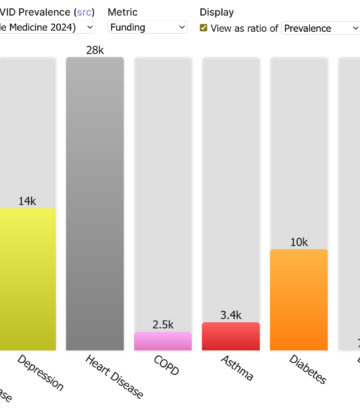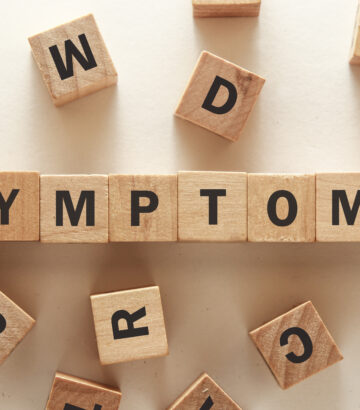With Millions Suffering, Long COVID is Devastating the Economy
Over 15 million American adults — about 1 in 17 — are currently living with long COVID, according to the CDC. While some have tried to claim that long COVID is gradually getting better, there’s not much evidence to suggest that’s the case. In fact, since the CDC began tracking long COVID in 2022, more than 5% of American adults have consistently reported long COVID symptoms at any given time.
I pointed this trend out to someone who was unaware of long COVID and the sheer number of people who appear to be suffering from it. “If many people are gradually developing long COVID,” they asked me. “Wouldn’t we see it in the economic data?” Yes, we would. And in fact, we are.
In the UK, the number of people with long-term sickness has been rising. From July 2019 to October 2023, the number of adults who were too sick to work increased by over 30%. Because of this, there are now fewer people working in the UK than there were before the pandemic began.
A similar story is playing out in Germany. Workers are now taking so many sick days that it’s pushed the country’s economy into recession, according to a study published by the VFA. The Bundesbank, Germany’s central bank, came to a similar conclusion this past winter, stating that the German economy likely shrank in the fourth quarter of 2023 due in part to “the relatively high sickness rate.”
But what about the US? The economy is growing, and the number of jobs now exceeds pre-pandemic levels. The US has been more aggressive with encouraging booster shots, so maybe that’s a factor. But what’s likely a bigger factor is immigration: In the last few years, most of the population growth in the US has been due to immigration. The same is true for employment growth. The country as a whole now has more jobs than before COVID, but there are actually fewer US-born workers than there were in 2019. The US appears to be importing the healthy workers it needs.
Research shows that people who work in public-facing jobs are more likely to develop long COVID than people who don’t. There are several possible reasons for this, but the simplest might just be that people who work these jobs tend to get infected more often. Assuming this is true, you would expect certain jobs to be especially difficult to fill — a lot of people who were once qualified to fill them have gotten sick. And the people you bring in to replace the sick people will eventually get sick, too.
And this is what we see, with persistent worker shortages in many public-facing jobs, including teachers, prison guards, and child care workers.
Scholars have noted that inflation surged rapidly in Europe following the Black Death: The plague killed too many people, and those who survived demanded much higher wages, pushing inflation up. We appear to be living through something similar, on a lesser scale. Inflation has surged over the last few years and has remained stubbornly high despite the Fed’s attempts to fight it.
Unfortunately, no one understands what long COVID is, who is at risk, or what the long-term prognosis is for long COVID patients. The CDC admits that anyone can get long COVID, even if they’ve been vaccinated or had been infected with COVID before. Dropping precautions and infecting the world on a massive scale over and over again may ultimately prove to be far more financially devastating than most people think.
Salvatore Mattera was an active, healthy person in his early 30s who developed long COVID despite being vaccinated and boosted. After nearly 3 years he is mostly recovered, but continues to suffer from mild symptoms.










